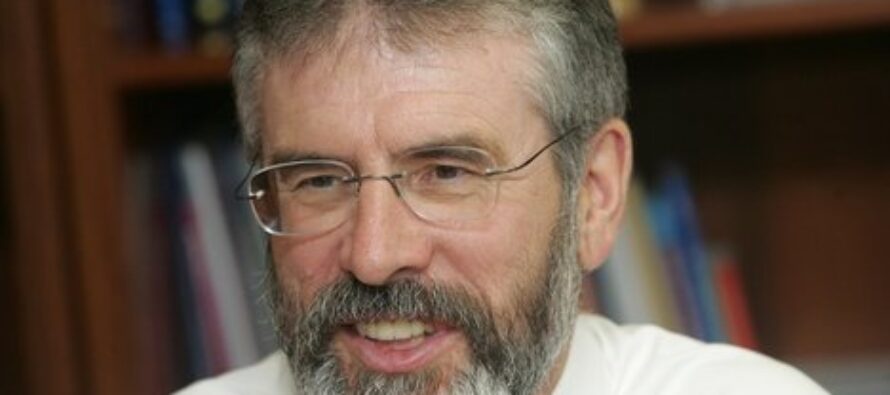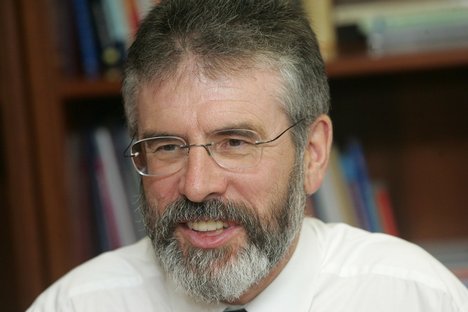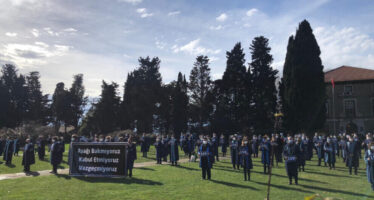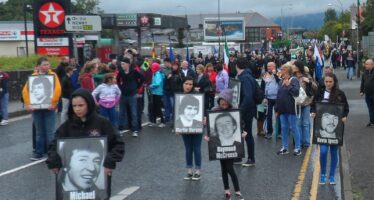Peace comes dropping slow

![]()
GERRY ADAMS *

The Middle East peace talks, which formally opened in Washington on Thursday 2 September, have been given one year. It’s a tall order. In 2006 when I visited the region I spent a brief time in the Kalandia refugee camp. It was opened in 1949 and is under Israeli control. That refugee camp is home to ten thousand Palestinian refugees who for 60 years have been dependent on emergency food aid and the provision of services. Generations have grown up under occupation while living in appalling conditions of poverty and deprivation. Kalandia was opened the year after I was born. And in every decade since that part of the world has been convulsed by one major war after another leaving thousands dead and millions more, almost all of them Palestinians, as refugees.
The United Nations Relief and Works Agency (UNRWA) estimates that there are some 5 million Palestinian refugees in the region and this excludes those who have moved further away to Europe, the USA and elsewhere. The issues that this new process of negotiations will have to resolve to achieve a durable peace settlement have been well rehearsed during many failed previous efforts.
A viable Palestinian state; Israeli occupation of Palestinian land; the siege of Gaza; the settlements; water rights; refugees; prisoners; the Separation wall and Jerusalem. One of the most immediate and pressing issues is that of the settlements. Since the 1967 war when Israel occupied East Jerusalem and the west Bank, the Israeli government has constructed some 100 settlements with a combined population of around 500,000 jews. These settlements are illegal under international law. Last November the Israeli government announced a moratorium on the building of new settlements, although this did not include East Jerusalem. The moratorium is scheduled to end in three weeks time on September 26th. The Palestinians have warned that renewed construction will bring an end to the negotiations while the Israeli Prime Minister Netanyahu has said that his government will not extend the moratorium. In addition Hamas and the people of the Gaza Strip are not represented in the talks. Hamas has been excluded from the negotiations and is opposed to the process. The killing of four Israeli settler’s near Hebron on Tuesday was claimed by its organisation the Izz al-Din Qassam Brigades.
Last year on a visit to the Gaza strip this blog met with senior Hamas leaders, including Prime Minister Ismail Haniyeh. Since then other Shinners [Sinn Fein members] have met representatives of Hamas, including Khaled Mashal, the political leader of Hamas. The Hamas leadership have told us that they want a peace agreement with justice, stability, security and peace for Palestinians and Israelis. To achieve this they are for a comprehensive ceasefire; the opening of borders; a two state compromise and the establishment of a Palestinian state with Jerusalem as its capital on the basis of the 1967 borders and the establishment of a long Hudna (long truce) to facilitate this.
In our contribution to these conversations and in talks with the Palestinian Authority , PLO representatives and Palestinian activists Sinn Fein representatives have stated our view that armed actions will not bring a resolution to the conflict or advance the Palestinian cause. Dialogue, involving substantive and inclusive negotiations, is the only way forward. All of the participants, including the Israeli government and Hamas,
need to create a context in which this can happen. There should be a complete cessation of all hostilities and armed actions by all sides and Hamas should be invited to participate in the current negotiations.
Not surprisingly the media and political commentary around the commencement of this phase of negotiations has been down beat. In some instances media reports are dismissing out of hand the possibility of any agreement. It is always easier to predict failure than find evidence of hope or progress.
It is true that when you look beyond the fine words and sentiments expressed on Tuesday night in Washington at the opening press conference that there are huge obstacles to achieving a breakthrough, not least of which is the absence of Hamas. However this blog believes that agreement is possible. Most citizens living in Israel, and the West Bank and Gaza already know its broad outline. Achieving this will require courageous political leadership, a willingness to take risks, initiatives and to make compromises. It means Israeli and Palestinian leaders working as partners to defend the rights and freedoms of each other.
The strategic interest of Israeli and Palestinian citizens is for peace. A peace that encompasses the security, prosperity and stability of the Israeli people and of the Palestinian people. That must be the goal of these talks. We wish them well in their efforts.
* President of Sinn Fein. His blog here
Related Articles
Academics worldwide in solidarity with Boğaziçi University students for academic freedom
![]()
A global solidarity campaign has been launched with the students of Turkey’s Boğaziçi University who have been protesting for a month against the appointment of an AKP supporter as rector.
1981 Hunger Strike – inflicted a historic defeat on the Thatcher government
![]()
Several weeks ago Sinn Féin’s hugely successful and popular re-enactment of the funeral of O’Donovan Rossa showed what can be achieved to further popularise the struggle for freedom, as well as to celebrate the lives of national heroes
Irish republicans pay tribute to Bobby Sands by reading his diary entries
![]()
Former Sinn Féin president Gerry Adams says that to commemorate the 40th anniversary of Bobby Sands hunger strike, 17 activists will read one of Bobby’s 17 diary entries.




